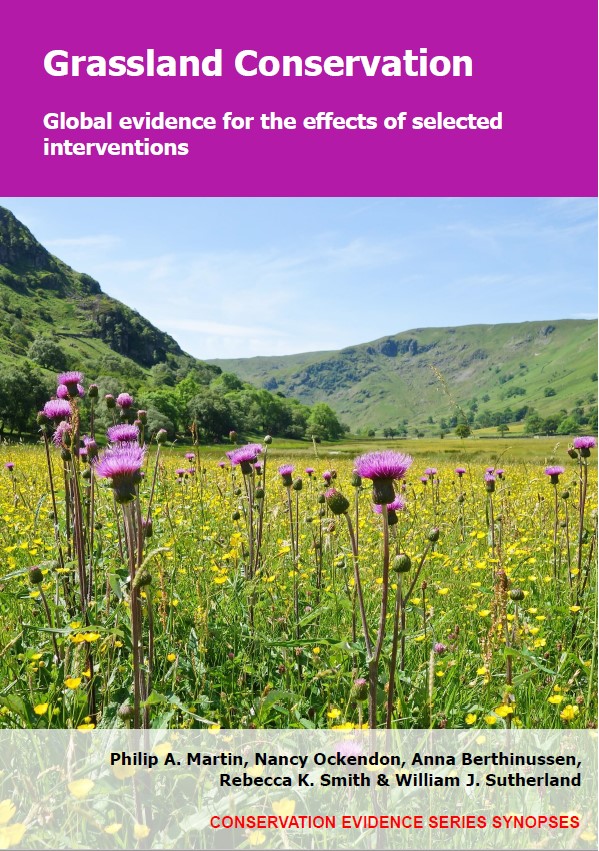Apply herbicide before seeding/planting
-
Overall effectiveness category Evidence not assessed
-
Number of studies: 4
View assessment score
Hide assessment score
How is the evidence assessed?
-
Effectiveness
not assessed -
Certainty
not assessed -
Harms
not assessed
Study locations
Supporting evidence from individual studies
A replicated, randomized, controlled study in 1972–1976 in a sagebrush grassland affected by wildfire in Nevada, USA (Evans & Young 1978) found that spraying with herbicide followed by sowing grass seeds had mixed effects on native grass, forb and shrub density compared to sowing without spraying. After four years, crested wheatgrass Agropyron desertorum density did not differ significantly between plots sprayed (0.35–0.40 plants/m2) and not sprayed (0.35–0.70 plants/m2) with herbicide before sowing. In one of two comparisons, native forb density was lower in sprayed plots (0.48 plants/m2) than unsprayed plots (0.31 plants/m2), and in one comparison there was no significant difference (sprayed: 0.34 plants/m2, unsprayed: 0.46 plants/m2). Total shrub density was higher in sprayed plots (112–148 shrubs/1,000m2) than unsprayed plots (74–84 shrubs/1,000m2). In October 1972, eight 12 x 12 m plots were sown with seeds of crested wheatgrass and intermediate wheatgrass Agropyron intermedium. Four of the plots were sprayed with herbicide (2,4-D), while the other four plots were left unsprayed. The number of grass, forb and shrub plants was counted in each plot in 1973, 1974 and 1976.
Study and other actions testedA replicated, randomized, paired, controlled study in 1998–1999 in a species-poor grassland near Göttingen, Germany (Hofmann & Isselstein 2004) found that spraying with herbicide followed by sowing seeds increased the emergence of seedlings for five of eight wildflower species compared to sowing alone. After one year, the average percentage of seedlings that emerged for five of eight wildflower species was higher in plots sprayed with herbicide before seeds were sown (22–35%) than in plots not sprayed with herbicide before seeds were sown (11–22%). For the other three species, seedling emergence did not differ significantly between sprayed (14–20%) and unsprayed plots (13–20%). In 1998, blocks were established at the site (replication unclear from study). The herbicide glufosinate was sprayed on vegetation in 0.5 × 0.5 m plots and six weeks later wildflower seeds were sown, while in other plots seeds were sown but herbicide was not sprayed (number for each not reported). Emergence of seedlings was recorded in each plot in July 1999.
Study and other actions testedA replicated, controlled study in 2001–2007 in a former landfill site in Somerset, UK (Carrington & Diaz 2011) found that applying herbicide before sowing seeds increased the number of seeded species compared to seeding alone. After two years, the average number of seeded plant species was higher in areas where herbicide was applied and seeds were sown (7.8 species/plot) than in areas where no herbicide was applied but seeds were sown (5.0 species/plot). The same pattern was true after 3–6 years (with herbicide: 2.4–7.2 species/plot; without herbicide: 1.7–5.1 species/plot), although statistical significance was not reported. In 1998, the landfill site was decommissioned and covered with clay to a depth of 1 m to which topsoil and compost were added to a depth of 15–20 cm. In June 2001, herbicide was applied and dead vegetation raked from six 10 × 10 m plots, while herbicide was not applied to six other plots. In June 2001, a commercial seed mix of 22 species was sown at a rate of 1.8 g/m2 in all plots. The presence of all plant species was recorded annually in June 2003–2007 using two randomly located 1-m2 quadrats in each plot.
Study and other actions testedA replicated, randomized, controlled study in 2005–2008 in two former agricultural fields in South Dakota, USA (Bahm et al. 2015) found that spraying with herbicide followed by sowing native grass seeds increased the cover of sown grass species and reduced the cover of unsown grass species compared to plots that were seeded but not sprayed with herbicide. After three years, the average cover of sown grass species was higher in plots where herbicide was sprayed and seeds were sown (57–70%) than in unsprayed plots where seeds were sown (1%). The opposite was true for unsown grass species (sprayed plots: 1–3%; unsprayed plots: 59%). In 2005, four 3 x 10 m areas were established in two fields where soybeans Glycine max were previously grown. Herbicide (‘Roundup’ containing imazapic and glyphosate) was randomly applied to three areas, while in one area herbicide was not applied. Two weeks later, a seed mix containing native grass seeds was sown in all areas. Vegetation cover was measured in eight 1-m2 plots in each of the four areas at the end of the growing season in 2006–2008.
Study and other actions tested
Where has this evidence come from?
List of journals searched by synopsis
All the journals searched for all synopses
This Action forms part of the Action Synopsis:
Grassland Conservation
Grassland Conservation - Published 2021
Grassland Synopsis





)_2023.JPG)














